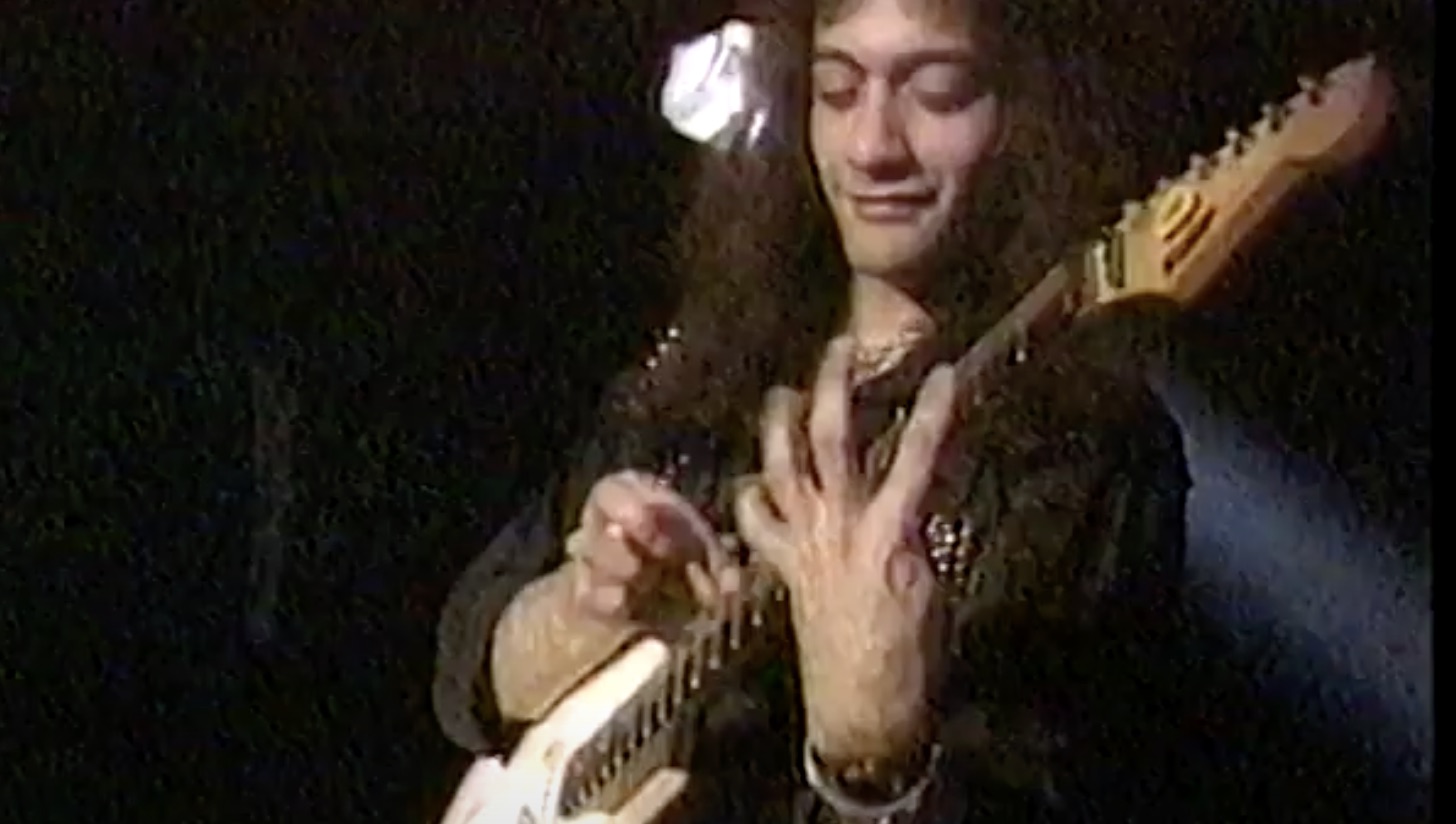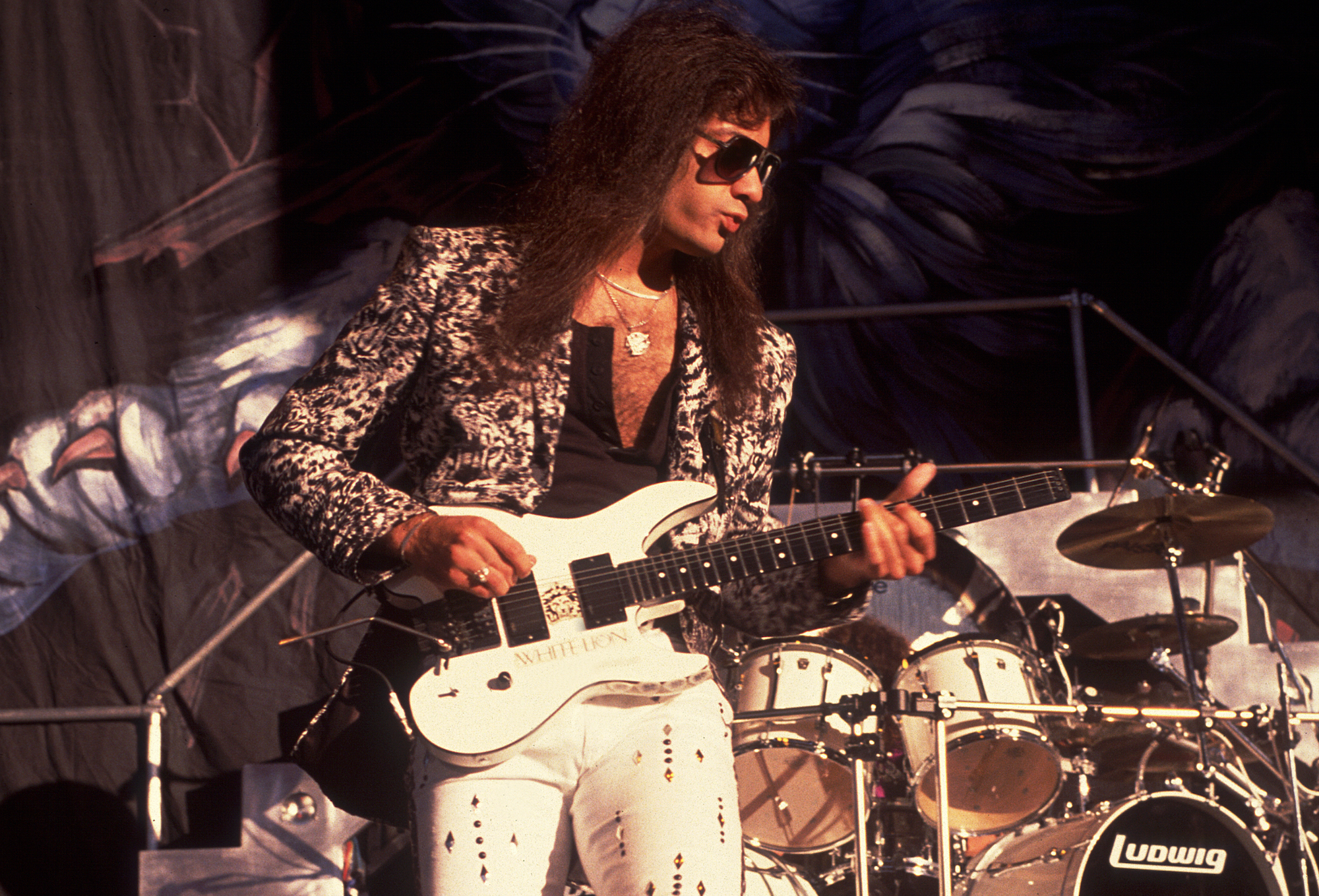Watch Vito Bratta bring the house down at New York's Ritz club with White Lion in 1988
This pro-shot footage of the band's blistering performance of Fight To Survive shows why Bratta is considered by many to be one of the era's greatest guitarists

You know Eddie Van Halen, you know George Lynch, you know Warren DeMartini... One name you might not be quite as familiar with, though, is Vito Bratta.
For those who followed Bratta's glam-metal band, White Lion, in their mid- to late-'80s heyday, Bratta is right up there even with those significant figures in '80s rock guitar.
Producer Michael Wagener – whose resume includes work with a who's who of hard-rock and metal giants – told Guitar World in a recent interview that, along with George Lynch and Zakk Wylde, Bratta is one of "the top three guitar players" he's ever worked with.
“Vito always had his own style," he explained. "That was the time of all those guitar players who had not the same but similar ideas, and Vito tried to stay away from that.”

To get a sense of the eye-watering technical skill and unique approach that drove Bratta's reputation – which, even 30 years after he abruptly retired from the music business, still stands tall – take a look at the video below.
Just as is the case with Randy Rhoads (one of Bratta's biggest influences), there's a frustrating lack of high-quality videos available of White Lion performing live in their heyday, which is part of what makes this pro-shot clip – filmed at the band's May 7, 1988 performance at the Ritz in New York City – so special.
In the video, the band perform Fight To Survive, the title track from their 1985 debut album. Before they do so though, Bratta takes center stage with a ripping unaccompanied solo. His virtuosic two-hand tapping is on full display (peep those ridiculous left-hand stretches, thankfully captured up-close by a wise videographer), as is his sense of showmanship.
Get The Pick Newsletter
All the latest guitar news, interviews, lessons, reviews, deals and more, direct to your inbox!
Even after the song kicks in, Bratta keeps things interesting on the side, spicing up the song's basic chord progression with fills, decorative runs and wailing whammy bar action.
Of course, Bratta can't finish the song out without another screaming solo, a highly melodic burner that touches on the song's themes, and shows the huge classical influence on his playing.
Most of the guitar great's solos, Bratta told Guitar World in an interview earlier this year began life as vocal melodies "that later got embellished with guitar technique. “So out of 20 notes of a melody in a solo, five of them might be the melody," he explained. "The others are little embellishments, little tricks or whatever.”
The end result was an inspiring, unique guitar approach that certainly had Eddie Van Halen DNA, but stood out in the crowded glam-metal six-string hotshot scene in both its virtuosity and willingness to break established rules.
Sadly though, White Lion never saw the chart-topping success experienced by many of their peers and, following their 1991 album, Mane Attraction, they were wiped out by the grunge wave.
Today, Bratta has fully retired from music, and lives in Staten Island, New York with his mother, in the home where he grew up. Sadly, his electric guitar playing has been extremely limited since he injured his wrist in a freak accident in 1997.
All these years later though, Bratta's six-string work on the first four White Lion albums sounds fresh. In a genre that is so closely associated with a specific time period, Bratta's playing is truly timeless.
Jackson is an Associate Editor at GuitarWorld.com. He’s been writing and editing stories about new gear, technique and guitar-driven music both old and new since 2014, and has also written extensively on the same topics for Guitar Player. Elsewhere, his album reviews and essays have appeared in Louder and Unrecorded. Though open to music of all kinds, his greatest love has always been indie, and everything that falls under its massive umbrella. To that end, you can find him on Twitter crowing about whatever great new guitar band you need to drop everything to hear right now.
Guitar World Discussion: Who is the most underrated guitar player of all time?
Ozzy Osbourne’s solo band has long been a proving ground for metal’s most outstanding players. From Randy Rhoads to Zakk Wylde, via Brad Gillis and Gus G, here are all the players – and nearly players – in the Osbourne saga











